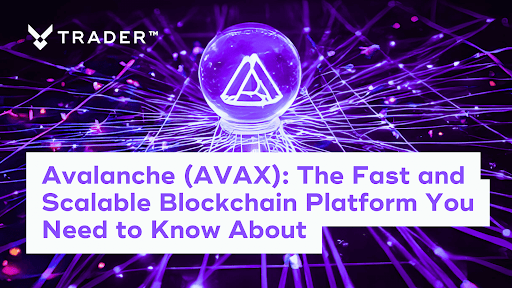Avalanche in 2025: Still Fast. Still Scalable. Still Worth It?
You’ve probably heard the hype—Avalanche can process over 4,500 transactions per second. No, that’s not a typo. It’s fast.
But speed isn’t the whole story. Avalanche has built a name for itself by tackling the blockchain trifecta: scalability, security, and decentralization (well, mostly). And now, with big upgrades and a growing dev base, it’s fighting to hold its place among the likes of Ethereum and Solana.
Let’s get into it—what makes Avalanche tick, where it stumbles, and why AVAX might just deserve a spot in your wallet.
First, What Is Avalanche?
Forget clunky chains that choke when traffic spikes. Avalanche is designed for scale from day one.
It launched in 2020—built by Ava Labs and backed by Cornell researchers like Emin Gün Sirer. It uses a Proof-of-Stake system paired with a snappy consensus model that settles transactions in under two seconds. That’s nearly instant, and it doesn’t sacrifice much in the decentralization department either.
AVAX is the fuel here. You stake it to help secure the network, pay transaction fees, and vote on governance decisions that shape the chain.
But here’s the cool part—subnets.
Avalanche lets developers launch custom blockchains (called subnets) under its umbrella. Think of it like spinning up your own mini-universe, fine-tuned to whatever your app or company needs. Gaming, finance, NFTs, logistics—you name it.
Why People Love Avalanche
Let’s call it what it is: Avalanche is built for performance. Here’s why that matters.
Speed that Doesn’t Flinch
4,500+ TPS. That’s fast enough to rival Visa in theory. It smokes Ethereum’s 30 TPS and makes high-frequency trading and fast-moving games totally viable.
Subnets = Scalability
Subnets don’t just help Avalanche scale—they’re customizable. Want your own rules? Need your own validator set? No problem. You build it, Avalanche backs it.
Low Fees, No Sweat
Transactions rarely cost more than a few cents. That means you can launch microservices, run NFT mints, or trade without sweating over gas prices.
Interoperability that Works
Bridges exist. Assets flow between Avalanche and Ethereum, BNB Chain, and beyond. It’s not an isolated island—it connects.
Eco-Friendly by Design
Running Proof-of-Stake, Avalanche avoids the energy binge that comes with Proof-of-Work chains. You’re scaling, not scorching the planet.
Where Avalanche Gets Pushback
Not everything is sunshine and staking rewards. Some cracks are worth noting.
Ecosystem Still Maturing
Compared to Ethereum? Avalanche’s dApp library is smaller. The talent pool is growing, but the developer community hasn’t hit critical mass yet.
Complex for Casual Users
Subnets are powerful—but confusing. Unless you’re technically savvy, the learning curve can feel steep.
Centralization Concerns
Fewer validators = faster consensus. But critics argue that it makes the network feel a bit less “trustless.” Avalanche says it’s still decentralized enough. Depends on who you ask.
AVAX Volatility
It’s crypto. You know the drill. AVAX can fly or flop based on market vibes. High risk, high reward.
What’s New in 2025?
Avalanche hasn’t coasted. It’s still sprinting.
Avalanche9000 Just Landed
The latest upgrade slashed the cost and time of launching subnets. Big win for developers who don’t want to spend weeks setting up infrastructure.
Big-Time Backers
Galaxy Digital. Dragonfly Capital. $250M in fresh capital through a recent token sale. Institutional interest is rising.
AVAX Price Check
As of this writing, AVAX is floating around $18.43 with a $7.57B market cap. Not ATH, but solid footing.
The Competition Is Real
Solana is still zipping along. Ethereum 2.0 is rolling out. Layer-1 wars are far from over, and Avalanche has to keep pushing to stay relevant.
Trading AVAX? Here’s Why vTrader.io Makes It Easy
If you’re ready to dive in, don’t overcomplicate it. Use a platform that gets out of your way.
Low Fees
No nasty surprises. Keep more of your profits.
Sleek UX
It’s intuitive. Even if it’s your first trade, you won’t feel lost.
24/7 Support
Middle of the night? We’ve got your back. Real humans. Real help.
Get Started in Minutes
Step 1: Sign up on vTrader.io
Step 2: Verify your ID (quick and secure)
Step 3: Fund your account with crypto or fiat
Step 4: Search “AVAX” and start trading
That’s it.
Real Projects Using Avalanche
Still think Avalanche is just theory? Not quite.
DeFi
Pangolin and Trader Joe are thriving on AVAX. Fast swaps. Cheap fees. Smooth UX.
Gaming & NFTs
Crabada makes use of Avalanche’s speed to offer lag-free play-to-earn action. Digital crab battles? Absolutely.
Real-World Use
Deloitte’s disaster relief platform runs on Avalanche subnets. Actual impact—not just DeFi Lego stacking.
Avalanche vs. The Rest
Ethereum? Avalanche wins on speed and fees. But ETH has the community, tooling, and brand.
Solana? Solana’s faster (on paper), but Avalanche offers more flexibility via subnets.
Different chains. Different strengths.
Final Word
Avalanche isn’t just fast—it’s flexible, affordable, and constantly evolving.
If you’re into trading altcoins, building on a Layer-1 that’s actually usable, or just staying ahead of the curve, AVAX deserves your attention.
And with vTrader.io, you’ve got everything you need to make your move.
Don’t just watch. Trade smart. Build smart. Be early.

Steve Gregory is a lawyer in the United States who specializes in licensing for cryptocurrency companies and products. Steve began his career as an attorney in 2015 but made the switch to working in cryptocurrency full time shortly after joining the original team at Gemini Trust Company, an early cryptocurrency exchange based in New York City. Steve then joined CEX.io and was able to launch their regulated US-based cryptocurrency. Steve then went on to become the CEO at currency.com when he ran for four years and was able to lead currency.com to being fully acquired in 2025.


